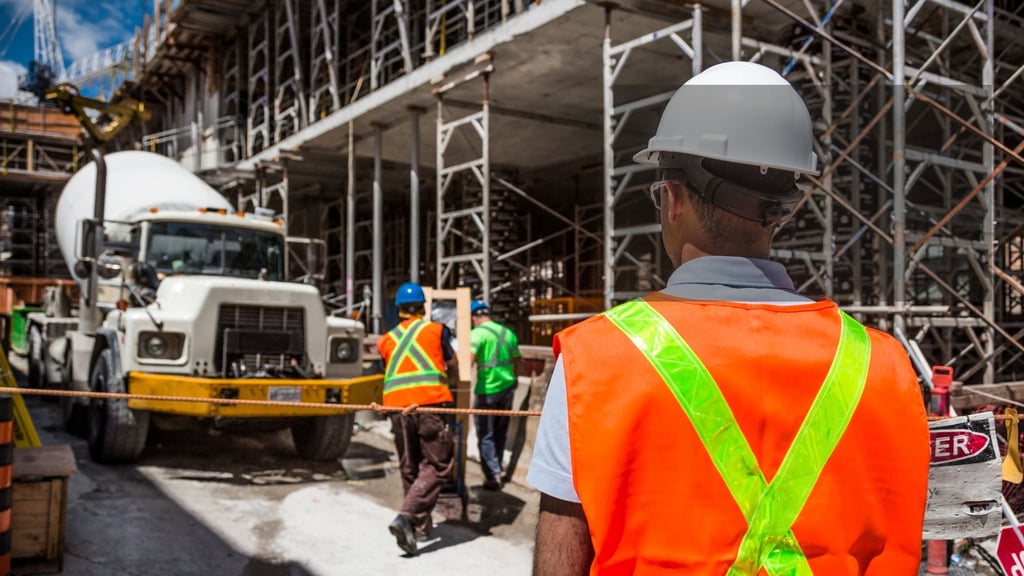What is the importance of a safe environment in the construction sector?
SITE SAFETY


The construction industry is known for its contribution to growth, innovation and development. It plays a significant role in shaping the world around us by constructing towering skyscrapers, building complexes, and vibrant neighborhoods. However, these massive projects come with an inherent risk that cannot be overlooked. Safety hazards are constant, and the consequences of ignoring them can be catastrophic. Therefore, the significance of a safe working environment in the construction industry cannot be overstated.
Conservation of human capital
The workforce, including architects, engineers, contractors, and other professionals, forms the backbone of any construction project. It is essential to prioritize their safety, not only as a legal obligation but also as a moral responsibility. A secure environment should be created to ensure the well-being of these individuals and protect them from potential harm. Construction companies can take comprehensive safety measures, provide adequate training, and necessary safety equipment to safeguard their employees and demonstrate genuine commitment to their welfare.
Increased Performance
It is a misconception that security measures impede productivity. In fact, a safe working environment can actually enhance productivity. This is because a safe workplace reduces the likelihood of accidents, injuries, and fatalities, which can lead to delays in projects and scheduling problems. When employees feel secure in their surroundings, they can focus entirely on their tasks, which in turn can result in increased efficiency. Furthermore, a safety-conscious culture fosters a sense of accountability and responsibility among employees, encouraging them to adhere to policies and contribute to a positive and harmonious work environment.
Cost Reduction
The financial impact of workplace accidents is significant. Construction companies can suffer from a range of costs, such as medical bills, legal fees, insurance expenses, and penalties. Moreover, accidents can cause project delays, contract disputes, and reputational harm, which can further increase the burden on the company's finances. Although investing in safety measures might require an initial cost, the long-term benefits far outweigh the upfront expenses. By taking proactive steps to manage accidents and minimize their consequences, construction companies can safeguard their financial stability and remain profitable in the long run.
Compliance with the laws
Regulatory agencies enforce stringent safety standards in the construction industry to safeguard both workers and the general public. Failure to comply with these standards can lead to significant fines, lawsuits, and even the closure of the business. Therefore, adhering to these regulations is not only fair but also necessary. A safe working environment ensures that construction companies meet or exceed these standards, minimize legal risks, and establish a reputation for reliability and integrity.
Developing trust and reputation
In the construction industry, trust and relationships are crucial. To maintain a good reputation, construction companies are expected to uphold high standards of safety and professionalism for consumers, stakeholders, and the general public. A strong safety environment is a clear indication of a company's commitment to excellence, which in turn boosts its reputation. By prioritizing safety, construction firms gain the trust of their customers, attract top talent, and stand out in a highly competitive marketplace.
In the constantly evolving construction industry, where progress and innovation are the norms, safety should always be given top priority. Maintaining a safe environment is not just a regulatory requirement or a mere formality; it's a fundamental principle that should be at the core of every aspect of the industry. By prioritizing the safety of their workers, construction companies can improve productivity, reduce costs, comply with regulations, and build trust. This, in turn, can help create a culture of safety that permeates every project, ensuring the well-being of the workforce and the long-term success of the company. As stakeholders in the construction industry, it's our responsibility to reaffirm our commitment to safety and work towards a future where every worker returns home safely.
